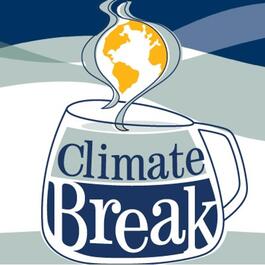
Rerun: Resilience Hotspots: Nature's Role in Urban Climate Adaptation
What are “Resilience Hotspots”? Technology and high-tech solutions are not the only responses to climate change. Nature can also be a powerful form of climate resilience. Resilience hotspots are small pockets of nature that, when restored and maintained, act as barriers to climate impacts. For instance, wetlands can insulate shores from storm surges and trees can provide shade in urban heat islands. In this way, climate adaptation can go hand-in-hand with integrating nature into our cities. The Science of Nature-Based Solutions While many natural areas can have climate benefits, wetlands and urban green spaces are particularly significant ecosystems in terms of climate adaptation. How do these natural protections from climate change work in the first place? Wetlands are areas where the soil is saturated with water either seasonally or year-round. They often provide crucial protection from the heavy rainfall and storms, which are becoming more frequent and severe due to climate change. Acting as a sort of sponge, wetlands have the ability to absorb and temporarily store the excess water from these events. When a storm hits, wetlands are a “speed bump” to floodwaters, slowing and holding back storm surge and flooding that otherwise causes damage to nearby cities and towns. According to NOAA, such protection by wetlands saves US coastal communities a whopping $23 billion a year. In many areas of the US, wetlands have been degraded by nearby urbanization or drained for development, leaving these areas more vulnerable to storm surge and flooding. As a result, restoring wetlands has become a priority as a strategy to increase climate resilience in these areas. Urban green spaces protect against a different climate impact: extreme heat. Because urban surfaces tend to be densely covered in heat-absorbing materials like asphalt or concrete, cities absorb a greater proportion of heat from the sun’s rays. This, combined with greater concentrations of greenhouse gasses in cities, leads to a situation where cities can be up to 20 degrees Fahrenheit hotter than nearby green spaces, a phenomenon known as the urban heat island effect. With the temperature increases associated with climate change, the heat island effect poses great risks for heat-related illness and death. Urban green spaces break up the dense cover of manmade material with parks, green roofs, and shade-providing trees, creating natural areas that reflect sunlight, take up greenhouse gas emissions and provide aesthetic and mental health benefits. How to Build Resilience Hotspots So how can we implement these nature-based climate solutions into our cities? The resilience hotspots approach uses a patchwork of crucial sites integrated into towns and communities. By focusing on places with great potential to mitigate climate damage, this approach promotes the benefits of nature-based solutions while working with the existing urban infrastructure. In the San Francisco Bay Area of California, for example, existing wetlands have the potential to store water and reduce storm surge during storm events if they are enhanced, thereby protecting a great number of low-lying urban places. Greenbelt Alliance has identified eighteen key areas across the Bay Area that have great natural potential to mitigate climate damages and are located in or near communities that will bear greater impacts from climate change. Working with community partners, they plan and implement restoration projects that enhance the ecosystem and increase resilience. Equity also plays an important role in designing resilience hotspots. A process that involves community organizations in the restoration of their environment integrates local expertise and insights and can promote equitable outcomes. By combining science and equity, restoration, equity and resilience can operate collectively. Resilience hotspots can be a natural tool for mitigating climate damages and for advancing climate justice.About our Guest Sadie Wilson is the Director of Planning and Research at Greenbelt Alliance, where she manages resilience hotspots work and advocates for climate smart planning and policy. During her Masters in City and Regional Planning at UC Berkeley, she contributed to research at many Bay-Area focused institutions including the San Francisco Bay Conservation and Development Commission, The Center for Cities and Schools, and The Terner Center. Further ReadingGreenbelt Alliance, About the Resilience HotspotsNOAA, Coastal Wetland BenefitsCBS News, Quick Explainer on Urban Heat IslandsEPA, How Inequity affects Heat IslandsQuaranta, Dorati & Pistocchi, Economic Benefits of Urban Greening (Scientific Reports, 2021)Greenbelt Alliance, Read some of Sadie’s work For a full transcript of this episode, please visit https://climatebreak.org/resilience-hotspots-natures-role-in-urban-climate-adaptation/
From "Climate Break"


Comments
Add comment Feedback